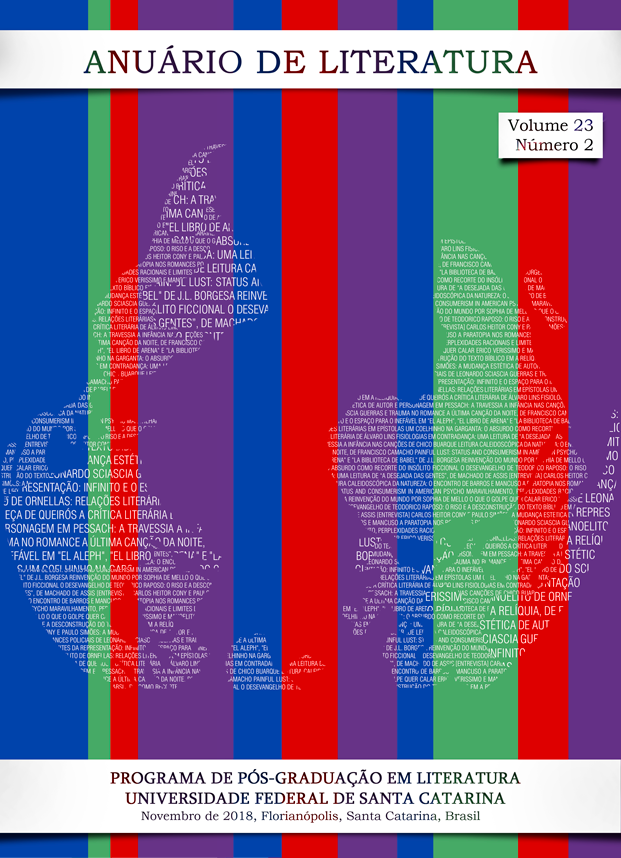Physiologies in contra dance: a reading of “A desejada das gentes”, by Machado de Assis
DOI:
https://doi.org/10.5007/2175-7917.2018v23n2p130Abstract
This paper proposes a reading of Machado de Assis’ “A desejada das gentes” starting from the diverse interpretations articulated within the Conselheiro’s narrative about the actions of his beloved Quintília. In their variety and imprecision, they indicate the wishes and intentions of the one who makes use of them, limited exegete, rather than conveying any kind of veracity about the object that animates them. Taking into account the effects of the dramatic form of the story, composed as a dialogue, we aim at unraveling how the desire for the protagonist is built by the narrative which, by the absence of an external voice capable of organizing the loose ends, demands an active reader, a typical Machadean gesture. Lastly, in dialogue with the Freudian notions of mourning and sublimation, we suggest that the Conselheiro’s narrative acquires certain sublimatory function, desexualizing Quintília’s character and, thus, guaranteeing to its enunciator the sole possession of a singular explanation.
Downloads
Published
How to Cite
Issue
Section
License
This journal provides open access to all of it content on the principle that making research freely available to the public supports a greater global exchange of knowledge. Such access is associated with increased readership and increased citation of an author's work. For more information on this approach, see the Public Knowledge Project, which has designed this system to improve the scholarly and public quality of research, and which freely distributes the journal system as well as other software to support the open access publishing of scholarly resources. The names and email addresses entered in this journal site will be used exclusively for the stated purposes of this journal and will not be made available for any other purpose or to any other party.

Este trabalho está licenciado com uma Licença Creative Commons - Atribuição 4.0 Internacional.


